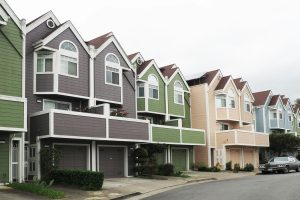Housing for All: Innovative Approaches to Achieving Affordability
Housing affordability has become a critical issue in many cities worldwide. The rising cost of living, coupled with stagnant wages, has made it increasingly challenging for people to find decent and affordable housing. As a result, many individuals and families are struggling to meet their basic housing needs, leading to a rise in homelessness and housing insecurity. But the good news is that there are innovative approaches being implemented to tackle this issue and move towards achieving housing for all. In this article, we will explore some of these game-changing solutions and how they are reshaping the landscape of affordable housing.
Incentivizing Developers to Build Affordable Housing
One of the most effective ways to increase the supply of affordable housing is to incentivize developers to build it. In many cities, developers are required to set aside a certain percentage of units in new developments for affordable housing. This approach, known as inclusionary zoning, has been successful in cities like San Francisco, where a similar program has resulted in the creation of over 9,000 affordable units since 1992.
Additionally, some cities are offering developers tax breaks and other financial incentives to build affordable housing. For example, the city of Seattle has implemented a multifamily tax exemption program that provides a tax break to developers who set aside a certain percentage of units as affordable. This not only increases the supply of affordable housing but also ensures that it is integrated into new developments rather than located in separate, low-income areas.
Revitalizing Existing Buildings for Affordable Housing
Another innovative approach to achieving affordability is through the revitalization of existing buildings. Many cities have an abundance of vacant or underutilized buildings that can be repurposed for affordable housing. This not only reduces the cost of new construction but also adds character and a sense of history to the affordable housing units.
In Los Angeles, the city’s Adaptive Reuse Ordinance encourages the redevelopment of historic buildings into affordable housing units. This has resulted in over 14,000 affordable units being created in previously vacant or underutilized buildings. By tapping into the city’s existing building stock, Los Angeles has been able to address its affordable housing crisis in a cost-effective and sustainable manner.
Using Technology to Improve Affordability
The emergence of technology has also paved the way for innovative solutions to the affordable housing crisis. One such solution is modular housing, which involves building homes off-site in a factory and then assembling them on-site. This method not only reduces construction time and costs but also allows for the creation of more affordable housing units in a shorter period.
Another technology-driven approach is the use of 3D printing to construct affordable housing units. This method has been gaining popularity in cities like Austin, Texas, where a nonprofit organization has successfully printed 400 square foot homes for as low as $4,000 per unit. By utilizing cutting-edge technology, cities can significantly reduce the cost of building affordable housing and increase their capacity to meet the growing demand.
Public-Private Partnerships to Tackle Affordability Together
A crucial aspect of achieving housing for all is the collaboration between the public and private sectors. With the government’s limited resources, it is essential to involve private entities to help finance and develop affordable housing projects. Public-private partnerships (P3s) have become an increasingly popular model for addressing affordability, with the government providing land or funding, while the private sector handles the development and management of the affordable units.
In New York City, the creation of P3s has resulted in the production of over 15,000 affordable units since 2014. This approach not only increases the supply of affordable housing but also leverages the private sector’s expertise in development and management.
Investing in Community Land Trusts
Community land trusts (CLTs) have emerged as a powerful tool in addressing affordability while empowering communities. CLTs are nonprofit organizations that acquire and hold land for the purpose of community development, including the creation of affordable housing. The community owns the land, while the homes are owned by individuals who lease them from the trust at an affordable price.
Cities like Detroit and Atlanta have leveraged CLTs to create affordable housing opportunities for low-income individuals and families. As the land is held in a trust, it remains permanently affordable, ensuring long-term affordability for future generations. Additionally, CLTs promote community involvement and control in the development and management of affordable housing, leading to a more equitable and sustainable outcome.
Conclusion
The affordable housing crisis requires creative and bold solutions. With the implementation of these innovative approaches, cities can move towards achieving housing for all and create more inclusive and sustainable communities. Government incentives, technological advancements, and partnerships between the public and private sectors are essential components in tackling affordability and ensuring that everyone has access to safe, decent, and affordable housing.










